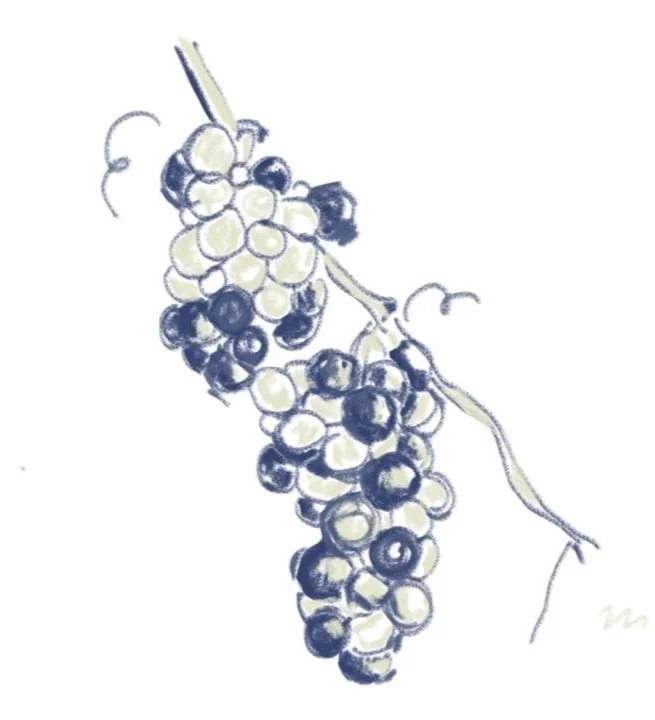Digital contributions and full-length writings for the aphrodisiac/hunger capsule, November 2024
AFORISMOS DEL ENCIERRO
Short film by Fernanda Gómez
This short film came from a summer night during quarantine, in my first apartment. I was lying on the floor after having taken acid, staring at the kitchen light. I remember the strange intensity of eating something. I thought about the desperation that kicks in when you are eating anything under the influence of psychedelics after a second of enjoying it. It feels as if you could actually die if you do not consume it fast enough and at the same time every second is better than the last and it could never end.
For several nights already, a woman stands alone in front of her kitchen sink at night, it is late but I cannot say how late, and eats a mango. She starts eating it slowly but the more she tastes it, the sooner her pace begins to pick up and the less afraid she is to get her hands messy. She allows herself to dig her fingers into the flesh and scrap away at it until she can feel the rough part of the seed, as she imagined it could resemble the feel of bone. By the time she is finishing the fruit, the mango is left looking like a beaten heart and the color has changed.
I used to think that the woman had finally reached the night in which she had eaten her lover, because she loved him or her very much. I used to feel like I loved people very much. A bit too much. It would often get out of my hands and the thought of consuming people began to feel as thrilling as the prospect of being consumed by someone else.
Being 20-23 and in love was pretty intense, but it taught me several things about myself and shaped me into the way I am today. It showed me a hunger for myself.
Sweet Crumble, Soft Lace
A Polaroid Series created for the Aphrodisiac/Hunger capsule by Irem Ergul
Aphrodisiac is in the crumble of something sweet, in lace that whispers against the skin, in the smudge of red lipstick left behind. It’s a quiet indulgence, a private ritual - baking as an act of devotion, to myself and to no one at all. Desire lives in the quiet, unspoken spaces, like a secret you only tell the moon.






Visual Aphrodisiacs
Video, words, and poem by researcher and curator Brechtje Polman:
What are we taught to understand as appetizing and appealing? In our current hypervisual and -digital society, we are continuously being seduced through our screens all around. This video is a visual exploration and playful critique on the hegemonic connotations that arise when we think of aphrodisiacs, hunger, and lust, with Penelope Cruz taking the lead!
While researching cinema on the themes of aphrodisiacs and hunger for this capsule, I realized that, for one reason or another, many films starring Penelope Cruz revolve around themes of sensuality and food. From her 90s rom-com Woman On Top in which she plays a chef, to Jamón Jamón, a film by Bigas Luna in which ham is used not only as a metaphor for lust and erotic desire but also to highlight patriarchal stereotypes and extreme masculinity. Before I knew it, I transformed Penelope into a music video muse for the song Love Is… by Poison Girlfriend, where she seductively whispers all kinds of affirmations to us.Within the framework of commodification and fetishisation in capitalist society, aesthetics—much like aphrodisiacs—are powerful because they can be used to whet appetites and paint a specific picture of what lust means. This short video is therefore an exploration of these connections and the commercial usage of aesthetics, exemplified by the various vintage Campari ads that often play with these gender dynamics.The main message is to critically reflect on how much of our desires are shaped by external influences (such as advertisements, cinema, and social media) and to reconsider the essence of an aphrodisiac, removing it from its restrictive Western heteronormative context.
Article first published in Simulacrum issue ‘Eten’ in 2021. Updated in 2024
“God became man, granted. The devil became a woman.”[1]
Stories of women poisoning their husband’s food or drink have captivated people throughout European history, in a large part because poisoning is presented as the ultimate act of cowardly cruelty, revenge, malice and sexual deviancy – and therefore perhaps liberation. It is women’s ambition and weakness that introduced all evil in the world (Pandora, Eve, etc). Narratives of women poisoners offer a glimpse into this particular misogynist construct. We are not strangers to evil, scheming women in literature, history, and art.
Modern European culture has its foundation in Judeo-Christian traditions, and the Bible’s account of the first humans answers the very question of how the Judeo-Chrisitan tradition constructs gender. Most are familiar with the story of Adam, the first man, and Eve, the first woman, who was created from Adam’s rib to be his second wife. Much less known is Lilith, Adam’s first wife, who was created from the same earth as Adam and was his equal. Lilith and Eve are the two incarnations of the Feminine: the primordial Feminine and the Wife/Mother, respectively. As the ‘untamed’ primordial Feminine, Lilith refused to be submissive to Adam, and eventually ran away. Adam requested that God send angels to bring her back, but she refused and became a demon who seduces men and kills newborn babies.[2] God then made Eve from Adam’s rib, and she initially appeared to be a much more fitting wife. However, Eve also proved to be unmanageable, which culminated in her eating from the forbidden fruit and thus bringing sin on humanity. In this way, both incarnations of the Feminine are tainted with sin, one as a demon and one as an ignorant wife who failed to resist temptation. Adam, the honest and loyal husband wronged by his first wife and tricked by his second was made to suffer the consequences of their evil. The Feminine is thus constructed as prone to sin and inherently evil unless contained by the Masculine (often through violence), who is steadfast and honest, loyal to God above all else.
The primordial Feminine that Lilith represents and the tamed Wife and Mother that Eve represents have been the two ways in which we view women in European history. The version that Lilith represents has seen many women killed in brutal ways, mostly for embracing the ancient expression of femininity incompatible with the Masculine construct that a patriarchal society relies upon: enter the Witch, the new expression of the primordial Feminine. Through centuries of persecution she survived, but not before she became the most feared creature in Western imagination. The Witch has knowledge of all poisonous herbs and foods, and concocts potions with them. But the Witch is also the protector of women, and thus a threat to the Masculine; she is antithetical to the carefully built Masculine construct not because she isn’t the Mother or Wife, but rather because she is – and not just to him. The Witch is mother and wife to all women, and routinely puts her life on the line for them.
One of many examples of this is Giulia Tofana, a woman in Renaissance Italy who sold a very popular cosmetic called Aqua Tofana. Giulia Tofana is credited with killing over six hundred men over the course of fifty years in the seventeenth century. She produced and sold Aqua Tofana: powder cosmetics which were laced with arsenic, lead and belladonna. It is said that as little as four drops of the odorless, colorless, and tasteless potion was enough to kill a person (a man, to be precise) and it was virtually untraceable by the toxicology of the time.[3] Within the analysis of European gender constructs, Tofana would be the Witch who, with her knowledge of poison, sought to provide a service to women who felt their only hope was through killing their husband. The network of clients that Tofana built is impressive enough to conclude that many women wanted their husbands dead. After all, patriarchal control of women through gendered constructs, and specifically through the violence and ingratitude of the Masculine construct, leaves women very little options. The inherent scheming, petty nature that European Judeo-Christian culture has attributed to women has been a self-fulfilling prophecy. Defeating the Masculine by poisoning his food is imperative to the survival of the primordial Feminine, the Witch, the Wife and the Mother, and above all, Woman.
“She’s a woman, Sir, and consequently a Monster.”[4]
Masculinity is so inherently frail, it requires the complete subordination and repression of the Feminine in order to exist. In fact, part of the first task of the Masculine is to subdue the Feminine until she becomes the Wife, because the Wife is passive, nurturing and life-giving. The act of poisoning takes place when the primordial Feminine, symbolized by Lilith, kills the Wife, symbolized by Eve, and turns from a life-giving force to a deadly one, as food is when it’s poisoned, thus turning from the nurturing Wife into the deadly Witch. This reveals the nature of the struggle between these constructs, the raw, primordial Feminine waging war against the Masculine, who cannot exist without the Wife. The battleground becomes food and drink, which the Wife as the life-giver must provide for the Masculine. The Masculine can conquer the battlefield with his mighty weapons and bravery, and can defeat any enemy that challenges him, but an enemy that does not challenge, but rather attacks when least expected, cannot be stopped. Defeat through poisoned food is emasculating because it circumvents that need for violence, which is what the Masculine is built on.
We can observe this process take place much less abstractly in the story of Agrippina the Younger, who is suspected by some historians of poisoning her husband (and uncle), Roman Emperor Claudius, in order to ensure the succession of her son Nero. Per ancient sources, Agrippina is portrayed as a cunning and scheming woman bent on accumulating power and influence in the Roman court. Such a woman can only be remembered by the limiting simplicity of gender constructs prevalent in her time and ours. In the story, Agrippina metaphorically embraces the primordial Feminine construct (so hated and feared by the Masculine) to kill her husband, the Emperor and the most powerful man of that time (the ultimate embodiment of the ideal Masculine) by feeding him poisoned mushrooms.[5] The fear of the Feminine that men have stems from this very act of bringing down and humbling the most powerful of men, the strongest and bravest soldiers and statesmen with something as simple as food. Agrippina exposes the Masculine without the need for physical overpowerment. Pushed by her culture to embrace a Lilith-like construct, Agrippina then saw her fate sealed when her son Nero, the newly crowned Emperor began to feel threatened by her unwillingness to yield back to the much more tamed Wife/Mother construct. After many unsuccessful attempts to kill her, including the use of poison, his assassins finally succeeded in stabbing her to death. Agrippina had so thoroughly embraced the Witch construct that her own son could not defeat her using her own weapon. Women like Agrippina prove that the gender constructs of European traditions are in constant struggle for their own survival through the defeat or taming of the other. She also proves that the Masculine construct can only survive if the Feminine is repressed and subdued into the Wife or Mother, delegated only to life-giving instead of the more complex dominion over both life-giving and life-taking.
“Woman’s at best a contradiction still.”[6]
In conclusion, the battle of the sexes, as the phrase goes, is not really a battle of the biological sexes, but rather a battle between over-simplified gender constructs stemming from traditions that came before the emergence of a Christian modern Europe. Masculinity and Femininity are complex constructs, but Femininity has always interpellated, awed, frightened, and enraged the patriarchal order, and so it has been beaten into submission so that the seemingly stronger Masculine can thrive. The Masculine construct exists only through the burning of the Witch, the submission of the Wife, and the passiveness of the Mother. And while the Masculine needs violence in order to constrain and/or contain the Feminine, the primordial Feminine’s use of poison completely bypasses that need for violence, and thus emasculates the patriarchy. Stories like the one of Giulia Tofana exemplify how the Witch (Tofana) and Wife (her clients) worked in tandem to bring down six hundred men without spilling a single drop of blood. Further, the story of Agrippina shows us that the Witch, the Mother, and the Wife need not necessarily be different people. She was the Mother and the Wife, but when she learned of her son’s betrayal, she is said to have asked the assassins to stab her in the womb, to kill the last remnant of the Mother in her and thus fully embracing the Witch.
It is natural and human to fear poison. The idea that a life-giving force such as food and drink can easily be turned into a life-taking force without any violence is a disturbing one. Before humans concocted our own poisons, nature was the provider of such substances, and we had evolved to fear them in order to survive. To have the power to poison is to almost have the power of nature itself, which is what the Witch is feared to have. The goal of each gender construct is its own survival in a binary, patriarchal society. For the feminine, there is not a wiser weapon than poison, or is not a man who is immune to it.
[1] Hugo, Victor. Ruy Blas. Charleston, SC: BiblioLife, 2009.
Act II, Scene V
[2] Lesses, Rebecca. “Lilith.” Jewish Women's Archive, March 20, 2009. https://jwa.org/encyclopedia/article/lilith.
[3] Carlton, Genevieve. “Meet the Woman Who Poisoned Makeup to Help over 600 Women Murder Their Husbands,” March 2, 2018.
[4] Wycherley, William. The Country Wife. (Mineola, NY: Dover Publications, Inc., 2018). 3
[5] Grimm-Samuel, Veronika. “On the Mushroom That Deified the Emperor Claudius.” The Classical Quarterly 41, no. 1 (1991): 178–82. doi:10.1017/S0009838800003657.
[6]Alexander Pope, Moral Essays, Epistle 2


